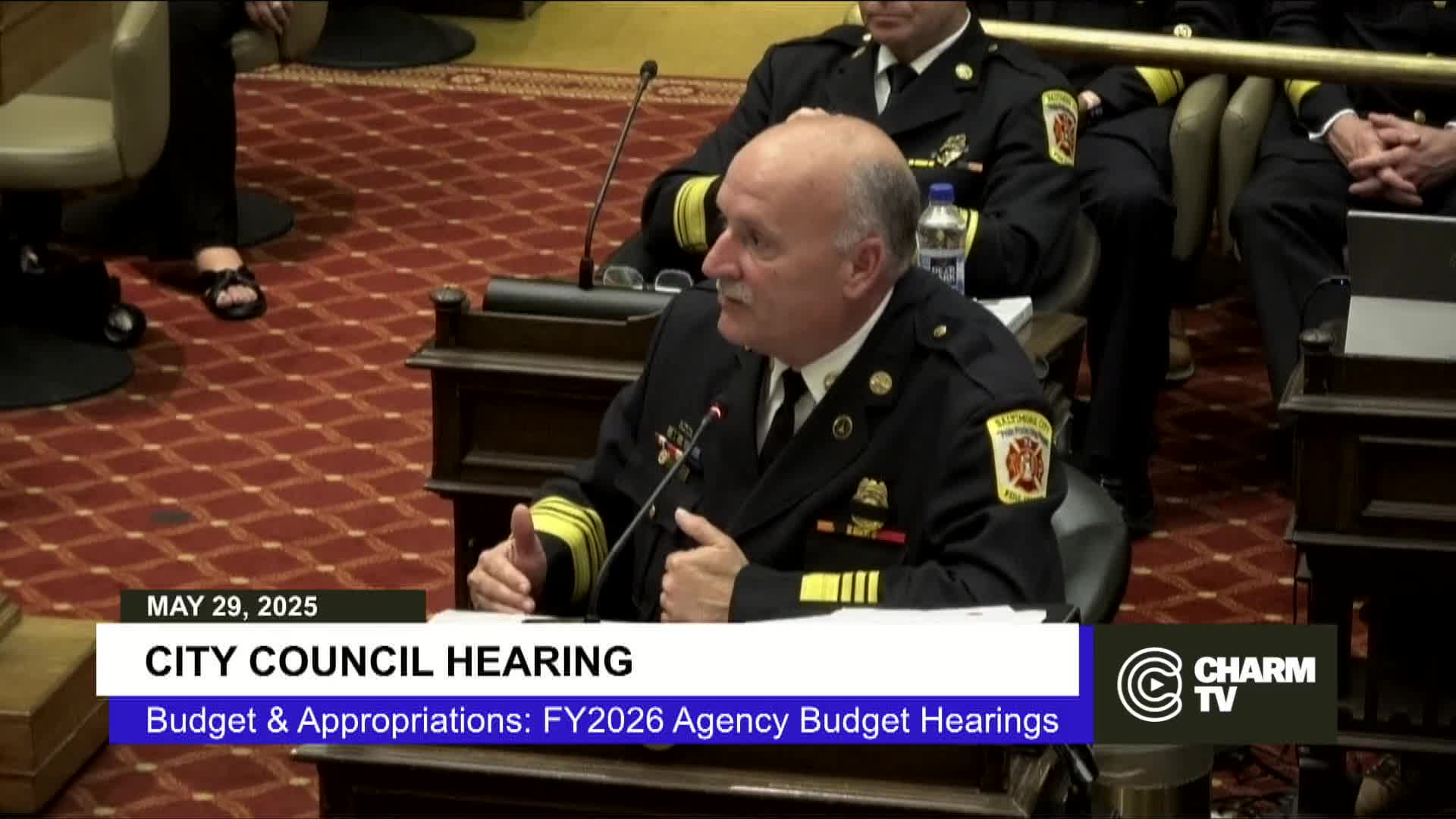City officials streamline fire department staffing and response strategies for better service
May 30, 2025 | Baltimore City, Baltimore County, Maryland
This article was created by AI summarizing key points discussed. AI makes mistakes, so for full details and context, please refer to the video of the full meeting. Please report any errors so we can fix them. Report an error »

The City Council of Baltimore convened on May 29, 2025, to discuss the Fiscal Year 2026 budget, focusing on the operations of the Office of Emergency Management (OEM) and the Baltimore City Fire Department (BCFD). A significant portion of the meeting centered on the effectiveness of the chase car program, which aims to improve patient care and reduce the burden on paramedics by directing specialized resources to appropriate patients.
Council members expressed strong support for the chase car initiative, highlighting its positive impact on patient outcomes and its role in alleviating the high call volume faced by emergency services. The program is designed to streamline responses to low-acuity calls, allowing paramedics to focus on more critical emergencies.
Concerns were raised regarding hospital wait times, which have been linked to increased overtime costs for emergency responders. It was noted that delays at hospitals can slow down response times and contribute to staffing challenges, particularly during shift changes when personnel may be delayed beyond their scheduled hours.
The discussion also covered staffing levels within the fire department, with officials explaining that the number of firefighters and emergency medical personnel is determined based on operational needs and response metrics. The BCFD utilizes data from the National Fire Protection Association (NFPA) standards to assess response times and strategically plan the deployment of resources. This data-driven approach helps ensure that the department meets its service obligations while maintaining safety standards.
Council members commended the fire department's leadership for addressing pay issues and fostering community engagement through initiatives like district walks, where firefighters connect with residents to promote safety and assess local hazards.
Overall, the meeting underscored the city's commitment to enhancing emergency services while navigating the challenges posed by high demand and resource constraints. The discussions will inform budgetary decisions aimed at improving public safety and operational efficiency in the coming fiscal year.
Council members expressed strong support for the chase car initiative, highlighting its positive impact on patient outcomes and its role in alleviating the high call volume faced by emergency services. The program is designed to streamline responses to low-acuity calls, allowing paramedics to focus on more critical emergencies.
Concerns were raised regarding hospital wait times, which have been linked to increased overtime costs for emergency responders. It was noted that delays at hospitals can slow down response times and contribute to staffing challenges, particularly during shift changes when personnel may be delayed beyond their scheduled hours.
The discussion also covered staffing levels within the fire department, with officials explaining that the number of firefighters and emergency medical personnel is determined based on operational needs and response metrics. The BCFD utilizes data from the National Fire Protection Association (NFPA) standards to assess response times and strategically plan the deployment of resources. This data-driven approach helps ensure that the department meets its service obligations while maintaining safety standards.
Council members commended the fire department's leadership for addressing pay issues and fostering community engagement through initiatives like district walks, where firefighters connect with residents to promote safety and assess local hazards.
Overall, the meeting underscored the city's commitment to enhancing emergency services while navigating the challenges posed by high demand and resource constraints. The discussions will inform budgetary decisions aimed at improving public safety and operational efficiency in the coming fiscal year.
View full meeting
This article is based on a recent meeting—watch the full video and explore the complete transcript for deeper insights into the discussion.
View full meeting
